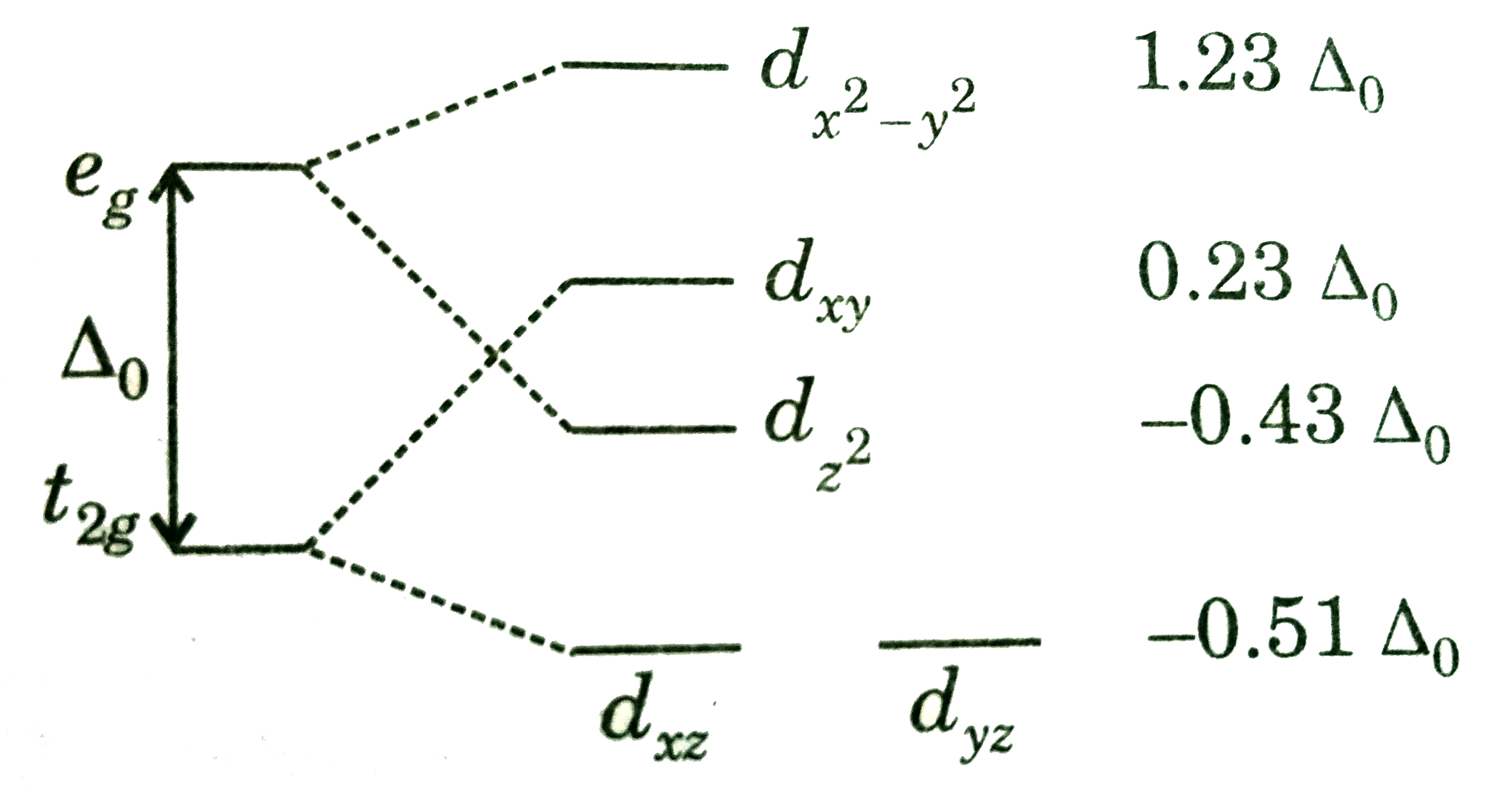What is the crystal field stabalisation energy value of d5 configuration for tetrahedral complex ?
0.4
0.0
−2
+2
The correct Answer is:B
Topper's Solved these Questions
- BOOK - ALLENCHAPTER - INORGANIC CHEMISTRYEXERCISE - p-BLOCK ELEMENT80videos
INORGANIC CHEMISTRY
- BOOK - ALLENCHAPTER - INORGANIC CHEMISTRYEXERCISE - s-BLOCK ELEMENTS21videos
INORGANIC CHEMISTRY
- BOOK - ALLENCHAPTER - INORGANIC CHEMISTRYEXERCISE - CHEMICAL BONDING120videos
INORGANIC CHEMISTRY
- BOOK - ALLENCHAPTER - HYDROGENEXERCISE - EXERCISE-518videos
HYDROGEN
- BOOK - ALLENCHAPTER - Ionic EquilibriumEXERCISE - All Questions26videos
Ionic Equilibrium
Similar Questions
What is crystal field stabilisation energy for high spin d6 configuration for octahedral & tetrahedral complexes.
View SolutionThe splitting diagram for square planar complexes is more complex than for octahedral and tetrahedral complexes and is shown below with the relative energies of each orbital.

Which of the following set of de− have same crystal field stabilisation energy value for tetrahedral complex neglecting pairing energy (P) :
(P)d1,d6 (Q)d2,d7
(R)d3,d8 (S)d4,d9
(T)d5,d10View Solution
Knowledge Check
- Question 1 - Select One
The magnitude of crystal field stabilisation energy (CFSE of Δ1) in tetrahedral complexes is considerably less than that in the octahderal field. Because
AThere are only four ligands instead of six so tha ligands fild is only 2/3 in tetrahedral complexBThe direction of the orbital does not coincide with the direction of the ligands. This reduces the crystal field stabilization energy (Δ) by further 2/3CBoth point (A) and (B) are correctDBoth point (A) and (B) are wrong. - Question 2 - Select One
The magnitude of crystal field stabilization energy (CFSE or Δt) in tetrahedral complexes is considerably less than in octahedral field. This is because
AThere are four ligands instead of six so the ligand field is only 2/3 the size hence , the Δt is only 2//3 the sizeBThe direction of the orbitals does not coincide with the direction fo the ligands . This reduces the crystal field stabilisation energy (Δt) by further 2/3CBoth points (A) and (B) correctDBoth points (A) and (B) are wrong . - Question 3 - Select One
Identity the correct increasing order of crystal field stabilisation energy value for the given complexes .
A[Ir(nH3)6]3+<[Rh(NH3)6]3+<[Co(NH3)6]3+B[Rh(NH3)6]3+<[Co(NH3)6]3+<[Ir(NH3)6]3+C[Co(NH3)6]3+<[Ir(NH3)6]3+<[Rh(NH3)6]3+D[Co(NH3)6]3+<[Rh(NH3)6]3+<[Ir(NH3)6]3+
The magnitude of crystal field stabilisation energy (CFSE of Δ1) in tetrahedral complexes is considerably less than that in the octahderal field. Because
View SolutionThe magnitude of crystal field stabilisation energy (CFSE of Δ1) in tetrahedral complexes is considerably less than that in the octahderal field. Because
View SolutionThe crystel field stabalisation energy of [Mn(H2O)6]2+ is
View SolutionWhat is the crystal field stabilization energy for high spin d6 octahedral complex?
View SolutionThe crystal field splitting energy for octahedral complex (Δ0) and that for tetrahedral complex (Δt) are related as:
View Solution

